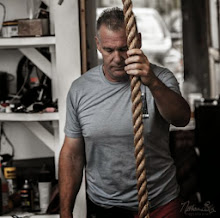Those of you who know me or have read my book, know I am not a big fan of strain and hold type stretching. One problem that occurs in the stretching of animals is the "anthropromorphic" view that they are the same as humans and will not allow us to harm them. I've seen photos on the covers of books where the animal's legs are being levered into an anatomical barrier.
Even without that the idea the we can simply stretch our muscles into some type of opening without engaging the nervous system is seriously flawed. This why I advocate for PNF stretching or Muscle Energy or what I called myofascial stretching in the book.
A study done by the Australian military--12000 army recruits in the study--where one portion of the study stretched before exercise and the other did not, resulted in a higher injury rate for those that stretched.
This article in the New York times suggests that same type of problem. So, the next time you think you want to stretch ourselve, dog or horse before a competition you may want to re-consider.
http://www.nytimes.com/2008/11/02/sports/playmagazine/112pewarm.html?_r=1&scp=1&sq=stretching&st=cse
Sunday, March 1, 2009
Subscribe to:
Post Comments (Atom)




2 comments:
I hope you are saying that the myofascial stretching is safe. I am following the guidelines in your book and have seen great benefits in my horse. I hold him where he wants, as long as he wants it. Sometimes he says "do it again". Very "vocal" about it. Going past his comfort level seems counterproductive.
What these studies showed was that stretching--the stretch and hold type we were taught in school--is not of real value and can contribute to problems if performed before work.
The myofascial stretching is a type of PNF stretch--you can't really do a PNF stretch with an animal--which is not in this category. But to be on the safe side I wouldn't stretch before an event or ride, leave it until after.
The type of stretching that is presented in most books and videos for horses is of the "old" stretch and hold type, which is what these studies were about. The main problem I've seen with these programs is in the emphasis on the drama of the stretch, for instance how far the leg comes off the graound, with no regard for the effects of the lever arm on the anatomical barriers that may be present:olecranon process of the elbow...
Post a Comment